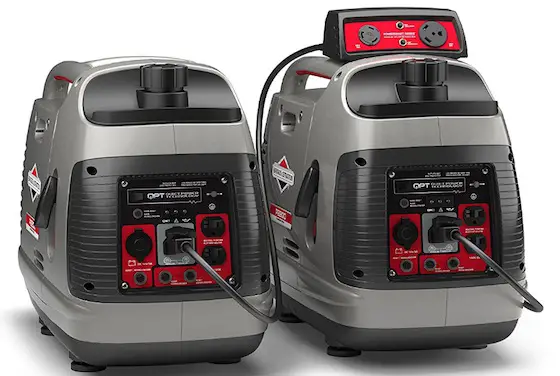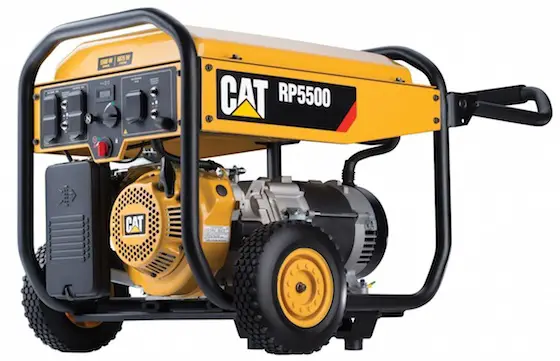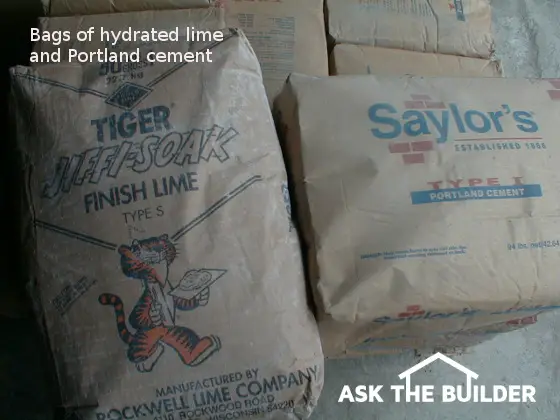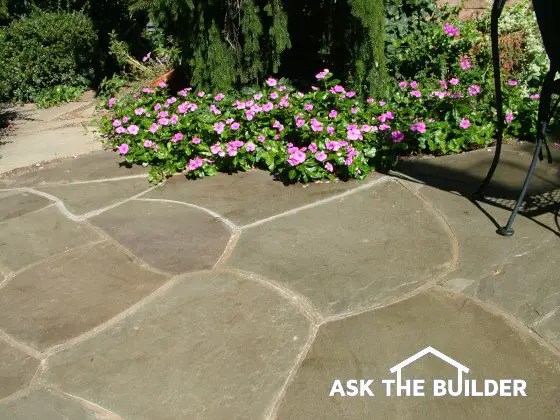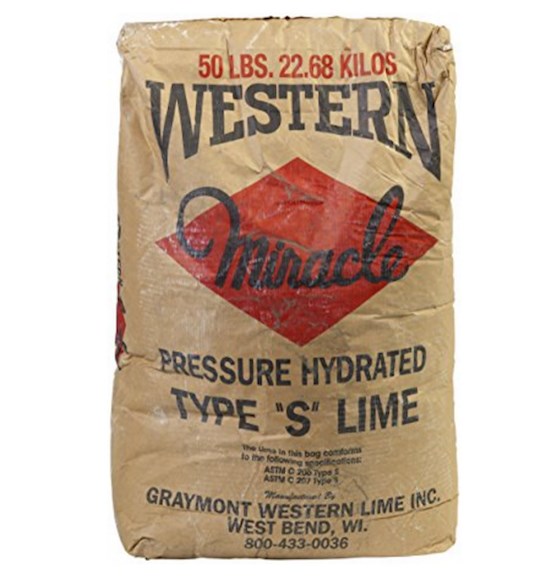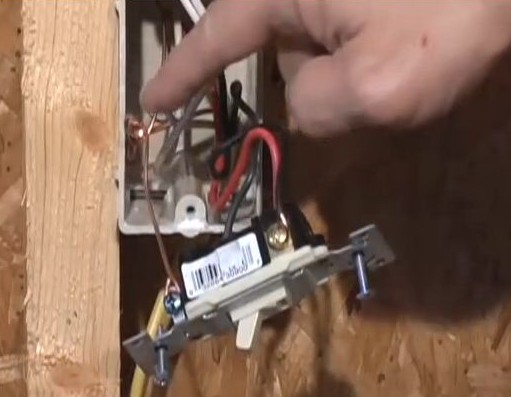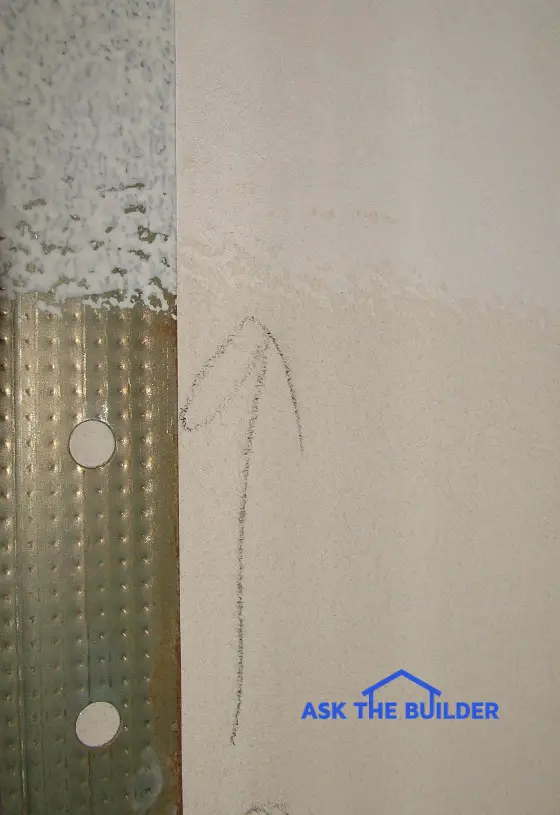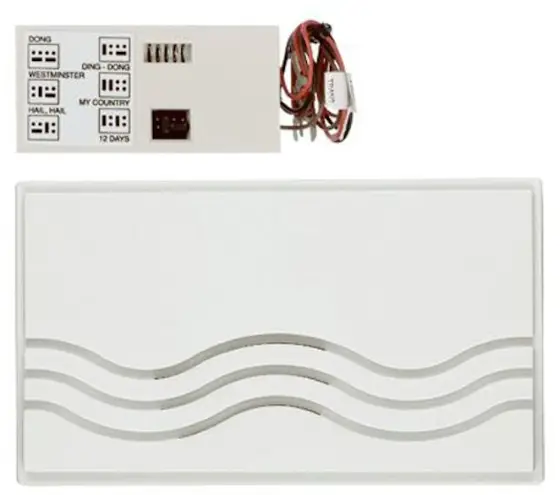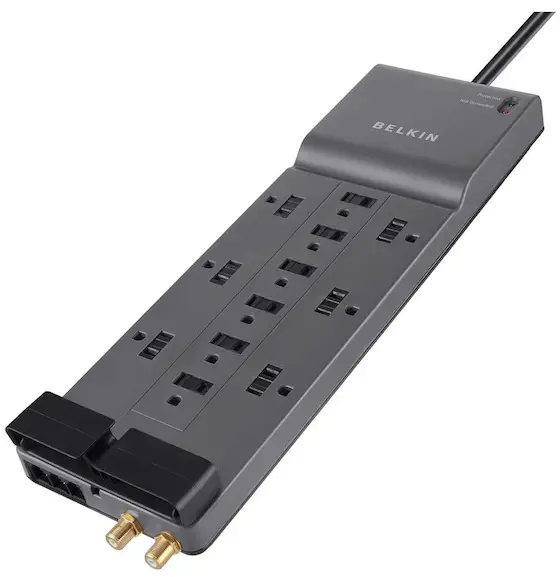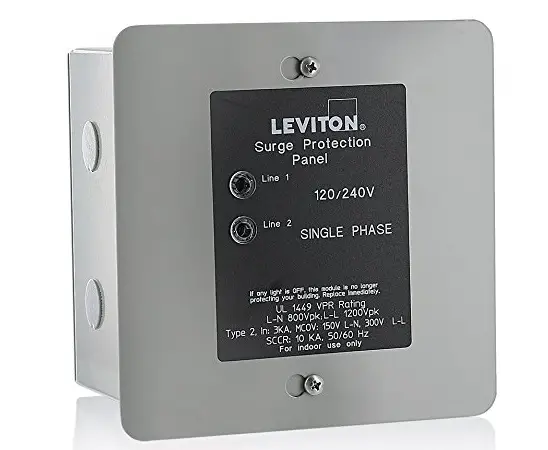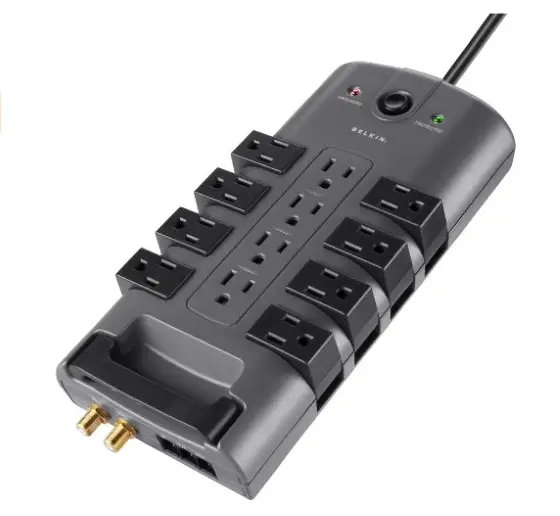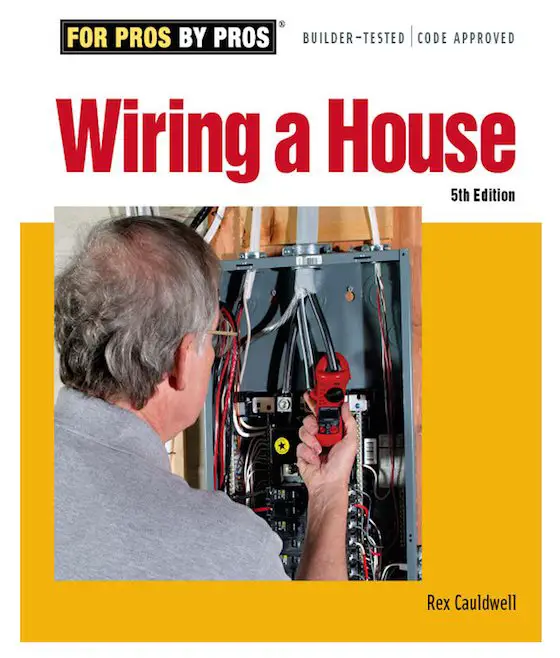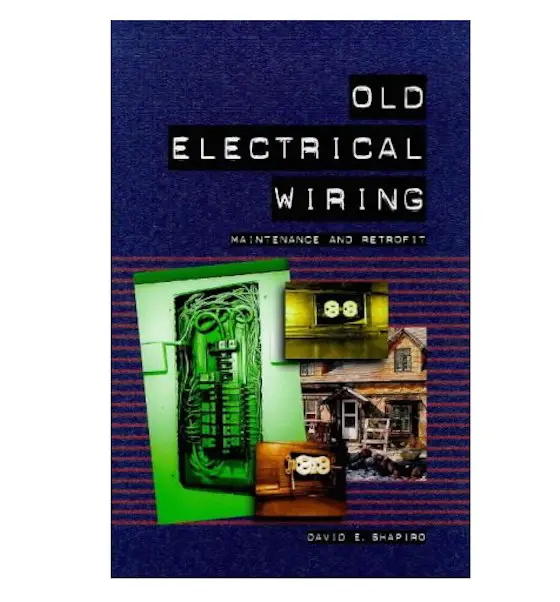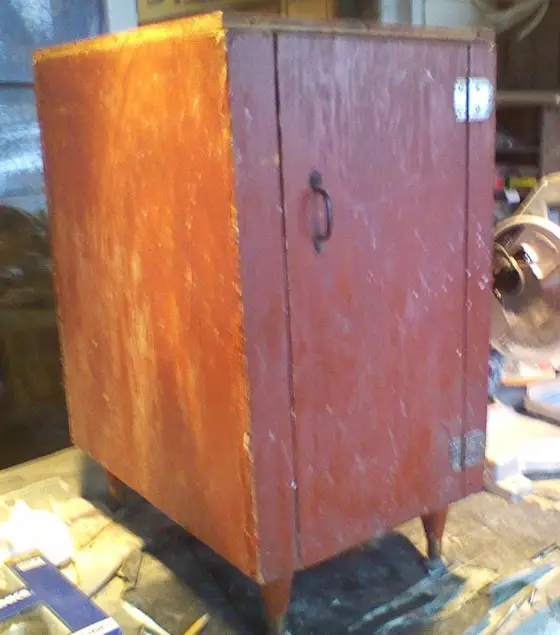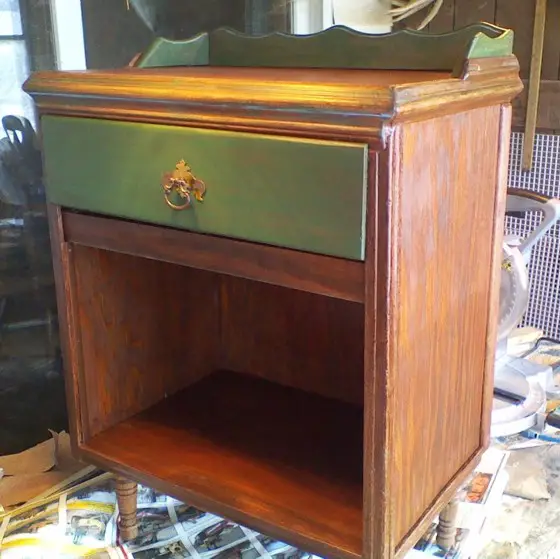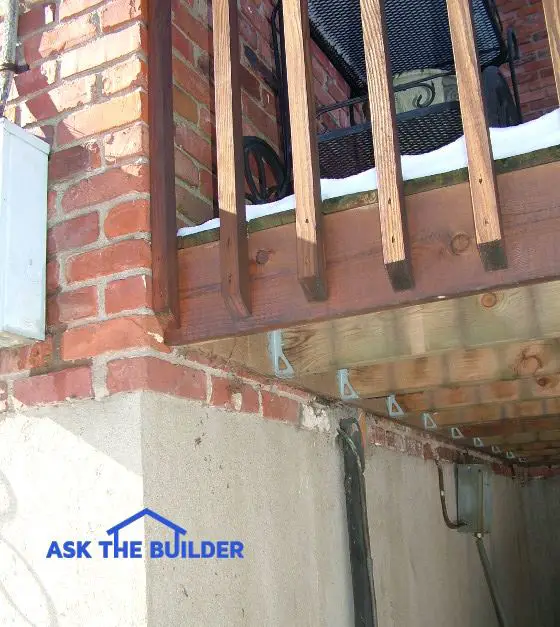
This deck ledger board is bolted directly to the house. If water gets between the ledger board and the brick, or siding, or stucco, it may never dry out. What's more, imagine if water trickles through the bolt holes into the house! PHOTO CREDIT: Tim Carter
Connect Deck To House TIPS
- Decks collapse each year and people die or are seriously injured
- Poor deck building practices lead to ROTTING WOOD
- WATCH deck collapse video below
- Detach deck from house converting it into a table
- CLICK HERE to Get Tim's FREE & FUNNY Newsletter!
DEAR TIM: The house I purchased five years ago has a very large treated lumber deck off the back. Just recently, I discovered spongy drywall inside my home where the deck connects to the house.
Upon further inspection of the exterior, serious wood rot was discovered. The cause appears to be no flashing where the deck ledger board connects to the house.
Does the deck have to be torn down so that I can do all of the needed repairs? What are my options, if any? Gates O., Pittsfield, MA
DEAR GATES: I realize you have problems, but believe me they could be much worse.
Deck Collapses Are Real
Imagine if you had not discovered the wood rot until after the deck collapsed? Each year, decks fall off houses and people are seriously injured or killed. The reasons for the collapses are many, but structural failures where the deck ledger board attaches to the house are commonly involved.
Watch people get seriously injured in this video:
Free & Fast Bids
Deck Ledgers Are Beams
The deck ledger board acts as a primary support beam for most decks. The board is attached to a house and the deck joists are fastened to the ledger board with special structural metal joist hangers.
At the other end of the deck away from the house, the builder often places another beam under the joists or in the same plane of the deck joists. The deck ledger board at the house often carries 50 percent or slightly less of the combined weight of the deck structure, any furniture on the deck and any people who are standing, sitting or dancing on the deck.
The combined weight of all of these things is often measured in tons.
Retrofit Your Deck
The good news is I doubt your deck has to be torn down. As for your options, my guess is that if ten carpenters were asked the question, you would end up with ten different solutions.
Disconnect Deck From The House
But I wonder if any of the carpenters or remodelers you interview will come up with the fix I have in mind. I am tempted to permanently disconnect the deck from your home and make it freestanding. Once this separation is complete you would never know it when standing on the deck.
From below, you may see two new deck support posts several inches away from your house wall.
Building a deck? Make the best decisions with my helpful and thorough Deck Installation & Repair Checklist. I offer a 100% Money Back Guarantee.
Through Bolts & Flashings
I used to attach deck ledger boards directly to houses. I took all kinds of precautions and installed flashings and caulked the holes where through bolts passed into and through the side wall of the houses.
But I never felt entirely comfortable with the long-term performance of the caulk at the bolt holes. The caulk manufacturers would say the caulk lasts for 20 or even 50 years, but how does one know?
Deck Becomes A Table
 Freestanding decks offer enormous peace of mind. The builder knows there are never going to be any leaks and collapse due to rot is simply not going to happen.
Freestanding decks offer enormous peace of mind. The builder knows there are never going to be any leaks and collapse due to rot is simply not going to happen.
The deck is constructed in a similar manner as a beach house is built on piers. In other words, the deck simply has four or more legs much like a table in your kitchen or dining room.
Special Connectors To Stop Sway
There are some very important structural aspects you must consider when you build a deck in this manner. The method of connecting the deck to the posts or columns is very critical.
Failure to do this in an approved manner can lead to the deck collapsing from racking or sway forces.
Back & Forth Motion
Racking can happen when dancing people start to get a deck moving back and forth sideways. It's a real and powerful force that has contributed to the collapse of many decks.
To prevent racking, residential structural engineers can recommend affordable metal connectors, special diagonal bracing under the deck and a simple yet sound design for how and where the deck posts connect to the deck beams and floor joists.
Wood deck surfaces need to be cleaned and sealed to keep them in good condition. The cleaner I recommend is oxygen bleach.
Deck Posts On Footings Or Piers
Your deck can possibly be retrofitted very easily if you choose to make your deck free standing. The additional support columns might be able to rest upon your existing house footer.
The new beam that will replace your deck ledger board only needs to be spaced 2 inches away from the existing exterior wall of the house. This spacing is more than adequate to allow water to drain between the house and beam.
New Treated Lumber High Copper Content
The extra lumber you buy to retrofit your deck may look like the treated lumber on your existing deck, but it might contain different chemicals that can be highly corrosive to certain nails and metal framing connectors. The leading structural framing connector manufacturers sell new connectors that have extra galvanizing treatment that resists the corrosive brew of treated lumber chemicals and rainwater.
Special Fasteners / Timber Screws
Just as important are the fasteners you use to connect the lumber together and to fasten the metal connectors to the lumber. These screws, bolts and nails must also be rated to resist corrosion when in contact with the new treated lumber.

This is a Simpson Strong-Tie Timber screw. I've used them on my own home. CLICK THE IMAGE NOW TO ORDER THEM.
You can't go wrong with stainless steel fasteners. Stainless steel will absolutely stand the test of time. The structural engineer you hire should specify the exact model number of all connectors, lumber type and the size and type of fasteners. CLICK HERE to read why these screws are IMPORTANT.
Read my article on Is Your Deck Safe? in the October 29, 2013 AsktheBuilder Newsletter.
